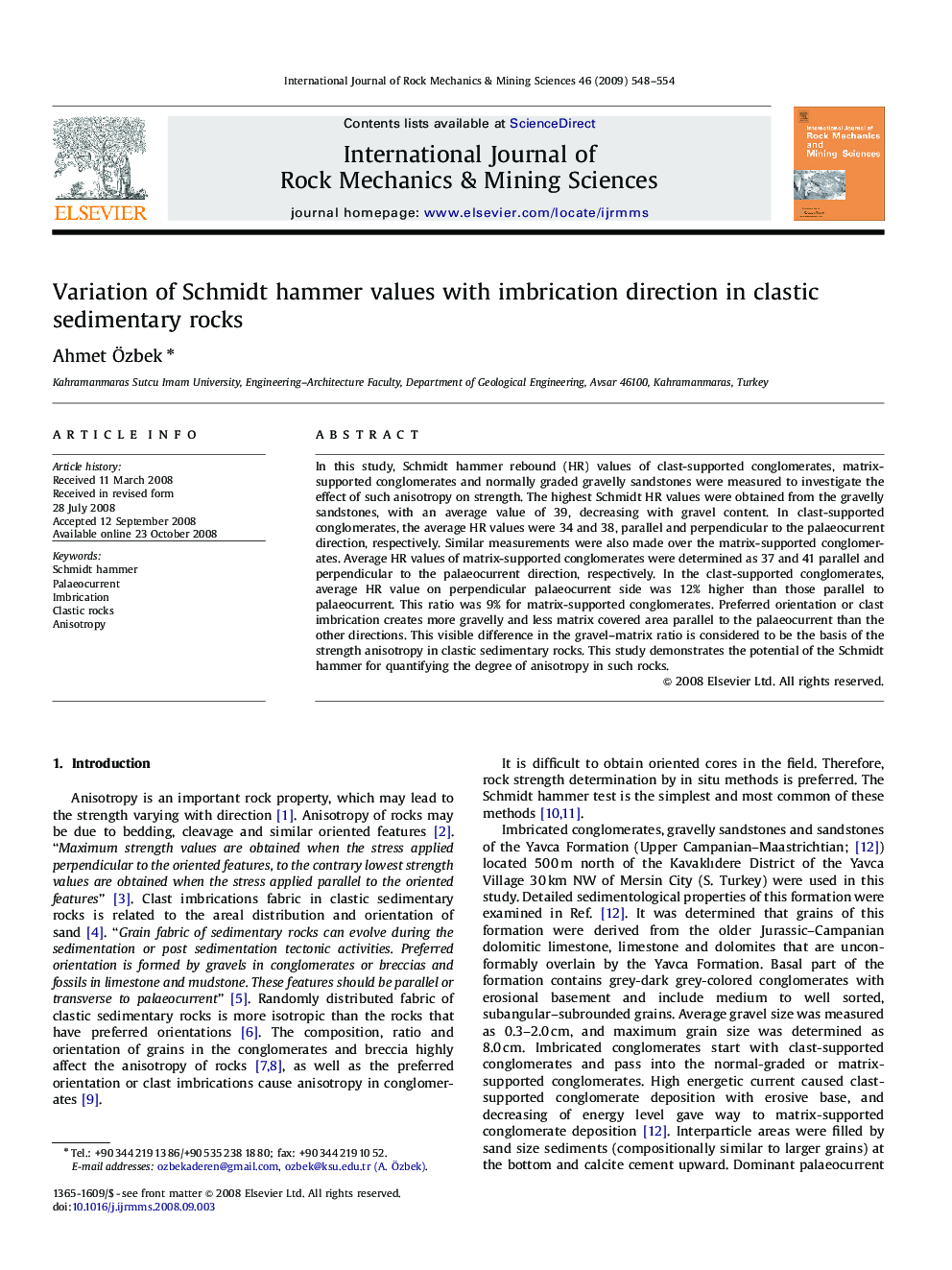| Article ID | Journal | Published Year | Pages | File Type |
|---|---|---|---|---|
| 810241 | International Journal of Rock Mechanics and Mining Sciences | 2009 | 7 Pages |
In this study, Schmidt hammer rebound (HR) values of clast-supported conglomerates, matrix-supported conglomerates and normally graded gravelly sandstones were measured to investigate the effect of such anisotropy on strength. The highest Schmidt HR values were obtained from the gravelly sandstones, with an average value of 39, decreasing with gravel content. In clast-supported conglomerates, the average HR values were 34 and 38, parallel and perpendicular to the palaeocurrent direction, respectively. Similar measurements were also made over the matrix-supported conglomerates. Average HR values of matrix-supported conglomerates were determined as 37 and 41 parallel and perpendicular to the palaeocurrent direction, respectively. In the clast-supported conglomerates, average HR value on perpendicular palaeocurrent side was 12% higher than those parallel to palaeocurrent. This ratio was 9% for matrix-supported conglomerates. Preferred orientation or clast imbrication creates more gravelly and less matrix covered area parallel to the palaeocurrent than the other directions. This visible difference in the gravel–matrix ratio is considered to be the basis of the strength anisotropy in clastic sedimentary rocks. This study demonstrates the potential of the Schmidt hammer for quantifying the degree of anisotropy in such rocks.
